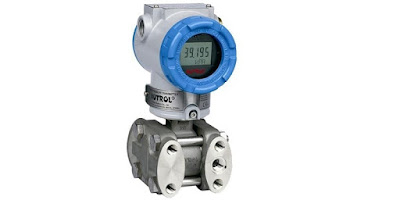A blog dedicated to process control, industrial instrumentation and measurement & control. Weekly posts highlighting educational, informative, and new product information on all aspects of process control equipment. Courtesy of Hile Controls, Inc. | Call us at 205.620.4000
Power System Surge Protection Device
Investments of time and financial resources to operate any business process can have their yield crushed in the blink of an eye by power system anomalies. Businesses and processes run on electric power. Greater levels of IT complexity, process instrumentation, or other electrical equipment generally bring higher levels of exposure to power line surges that can bring unexpected downtime or equipment damage to a going concern.
Prevention through protection is the only available course of action for hardening facilities to the potentially damaging effects of line surges. Dehn, Inc. manufactures products that provide solutions for lightning and surge related problems. Surge protectors and lightning current arrestors, available as compact DIN rail mounted units, function as protective devices for motors, IT equipment, process controls, and instrumentation.
The video below provides a view of how the protective devices function. Without a protection plan in place, any facility is exposed to potential damage. Share your plans and challenges with a product application specialist, combining your facilities knowledge with their product application expertise to develop an effective solution.
Limiting Control Enclosure Temperature Rise
 |
| Cooling units for enclosures utilize heat pipe technology and passive heat sinks to limit enclosure temperature rise. Courtesy Advanced Cooling Technologies |
Advanced Cooling Technologies specializes in the design and manufacture of cooling devices for control and equipment enclosures. The company employs heat pipe technology, as well as heat sinks, to transfer substantial amounts of heat from within sealed enclosures. The special design of the cooling units maintains the rated performance of the enclosure and effectively moves heat from enclosure interior to surrounding environment. Units encompass a range of sizes, configurations and capacities.
Share your enclosure cooling challenges with product application specialists, combining your own knowledge and experience with their product application expertise to develop effective solutions.
Hydrostatic Pressure Measurement for Liquid Level
 |
| Smart transmitters are capable of performing advanced calculations to infer liquid level from hydrostatic pressure measurement Courtesy Autrol America |
A common method for measuring hydrostatic pressure is a simple gauge. The gauge is installed at the bottom of a vessel containing a column of liquid and returns a measurement in force per unit area units, such as PSI. Gauges can also be calibrated to return measurement in units representing the height of liquid since the linear relationship between the liquid height and the pressure. The particular density of a liquid allows for a calculation of specific gravity, which expresses how dense the liquid is when compared to water. Calculating the level or depth of a column of milk in a food and beverage industry storage vessel requires the hydrostatic pressure and the density of the milk. With these values, along with some constants, the depth of the liquid can be calculated.
The liquid depth measurement can be combined with known dimensions of the holding vessel to calculate the volume of liquid in the container. One measurement is made and combined with a host of constants to determine liquid volume. The density of the liquid must be constant in order for this method to be effective. Density variation would render the hydrostatic pressure measurement unreliable, so the method is best applied to operations where the liquid density is known and constant.
Interestingly, changes in liquid density will have no effect on measurement of liquid mass as opposed to volume as long as the area of the vessel being used to store the liquid remains constant. If a liquid inside a vessel that’s partially full were to experience a temperature increase, resulting in an expansion of volume with correspondingly lower density, the transmitter will be able to still calculate the exact mass of the liquid since the increase in the physical amount of liquid is proportional to a decrease in the liquid’s density. The intersecting relationships between the process variables in hydrostatic pressure measurement demonstrate both the flexibility of process instrumentation and how consistently reliable measurements depend on a number of process related factors.
Solutions to process instrumentation and measurement challenges are most effective when developed in concert with a product application specialist. The combination of user knowledge and experience with product application expertise will lead to a successful project.
Added Services Enhance Product Value
 |
| Collaboration and cooperation leverages the pool of knowledge and experience brought to bear on problem solving |
At the company level, many technical representatives commit to bringing factory level training resources to their customers. Reading instruction manuals can often fail to instill real understanding about the application, use, and upkeep of process and automation gear. Plus, manuals provide only one way communication. Training conducted by experienced, knowledgeable, factory trained individuals can instill almost tangible levels of comprehension in operators, users, and supporters of process and automation equipment.
Field services, in the form of start-up, calibration, repair, or regular maintenance of instruments and equipment are also provided by many technical sales firms. Again, bringing to bear broad experience and factory level training, technical representatives can function as an efficient outsource for essential tasks that may require special skills or knowledge. Repair, whether in-house or facilitated through the factory, is another way in which technical representatives leverage their experience and knowledge into offerings that bring value to their customer base.
Face it, if all that was needed was quick delivery of process and automation gear, Amazon.com would be your primary supplier. These are sophisticated instruments, apparatus, and equipment, requiring skill, knowledge, and experience to assure proper selection, installation and operation. A good technical rep firm knows that its customers need more than a product in a box or crate. It's results that count, output, and Hile Controls of Alabama is committed to assisting customers wherever Hile's expertise can help leverage positive outcomes for their customers.
Subscribe to:
Posts (Atom)